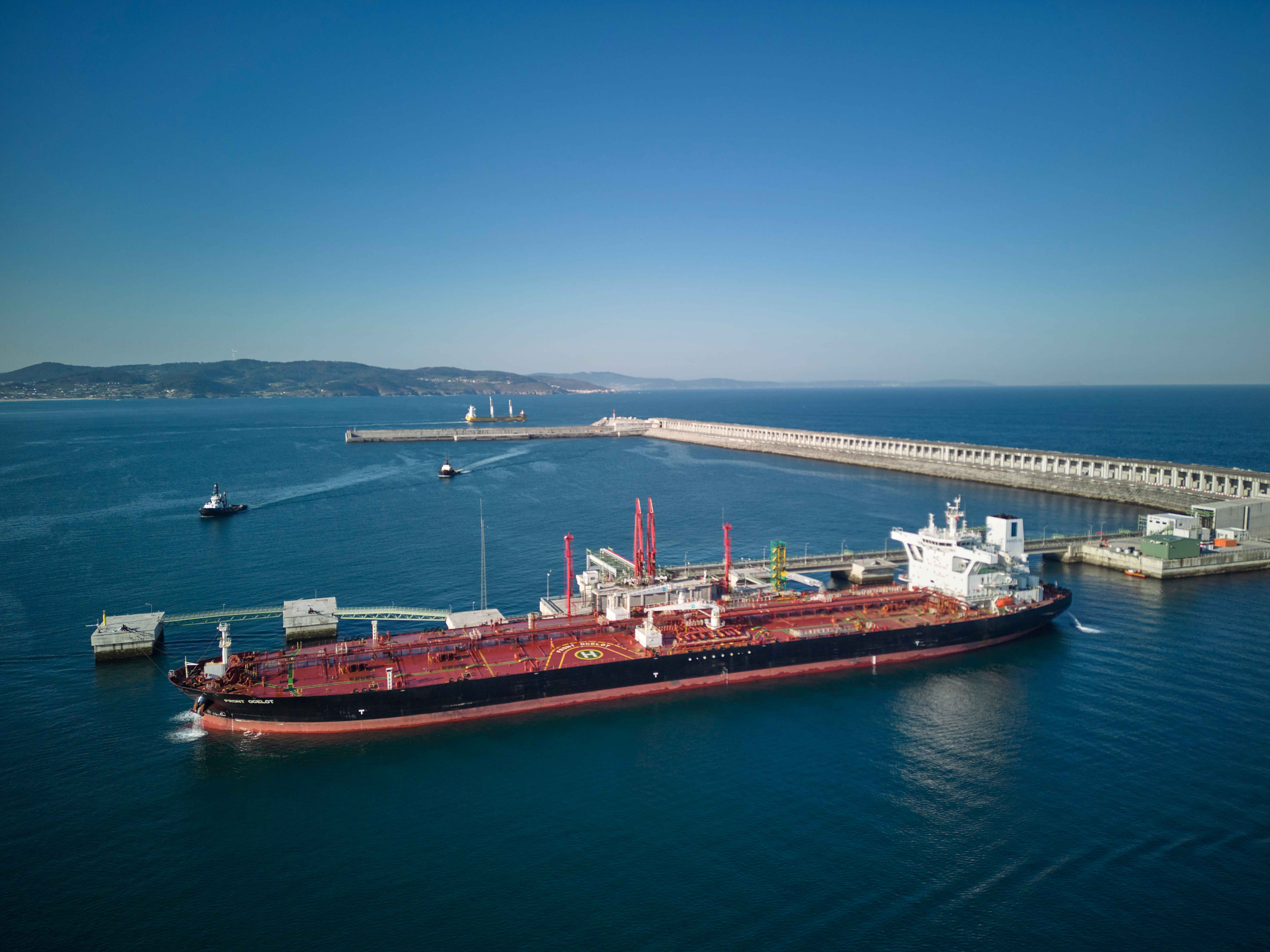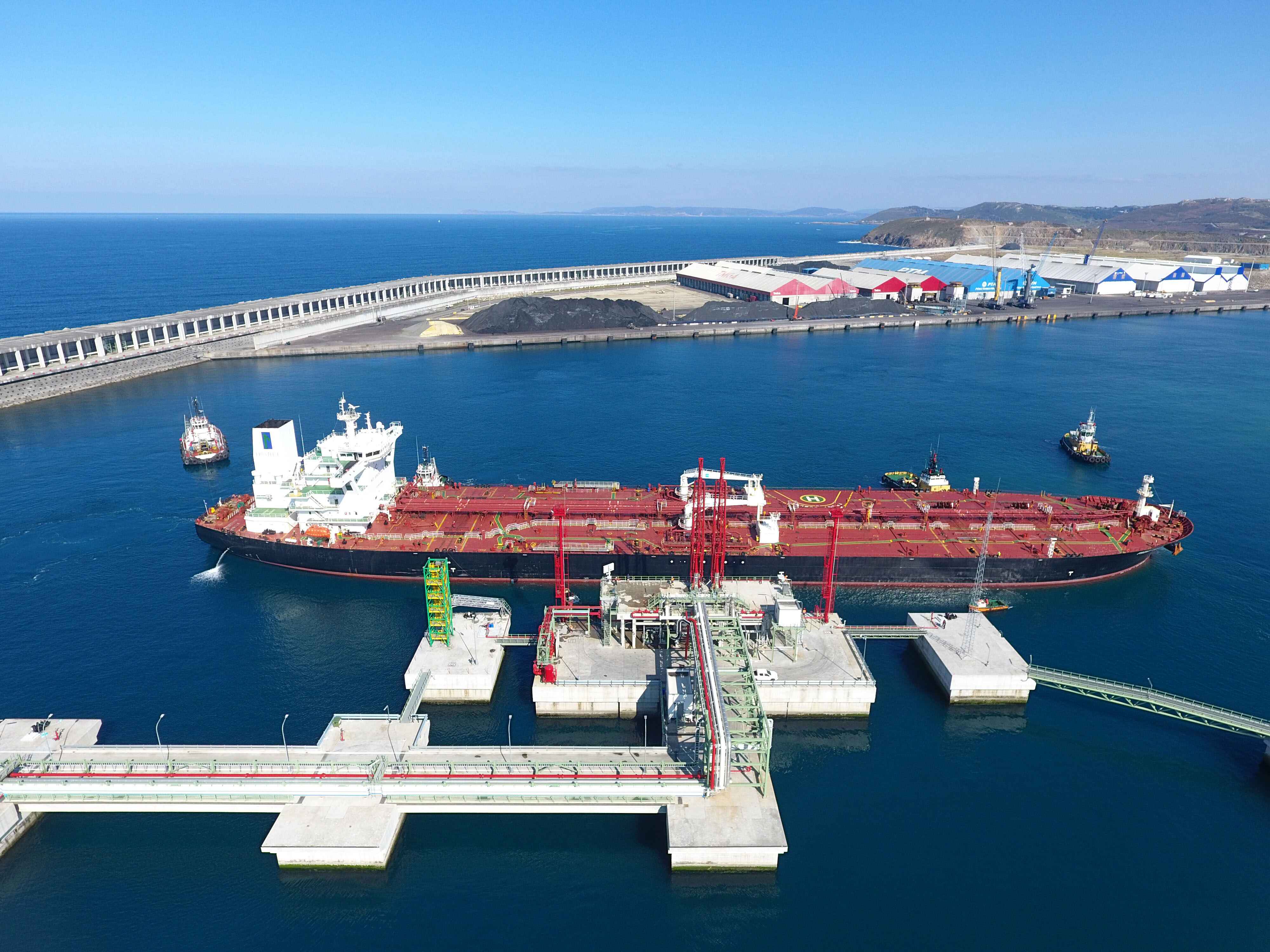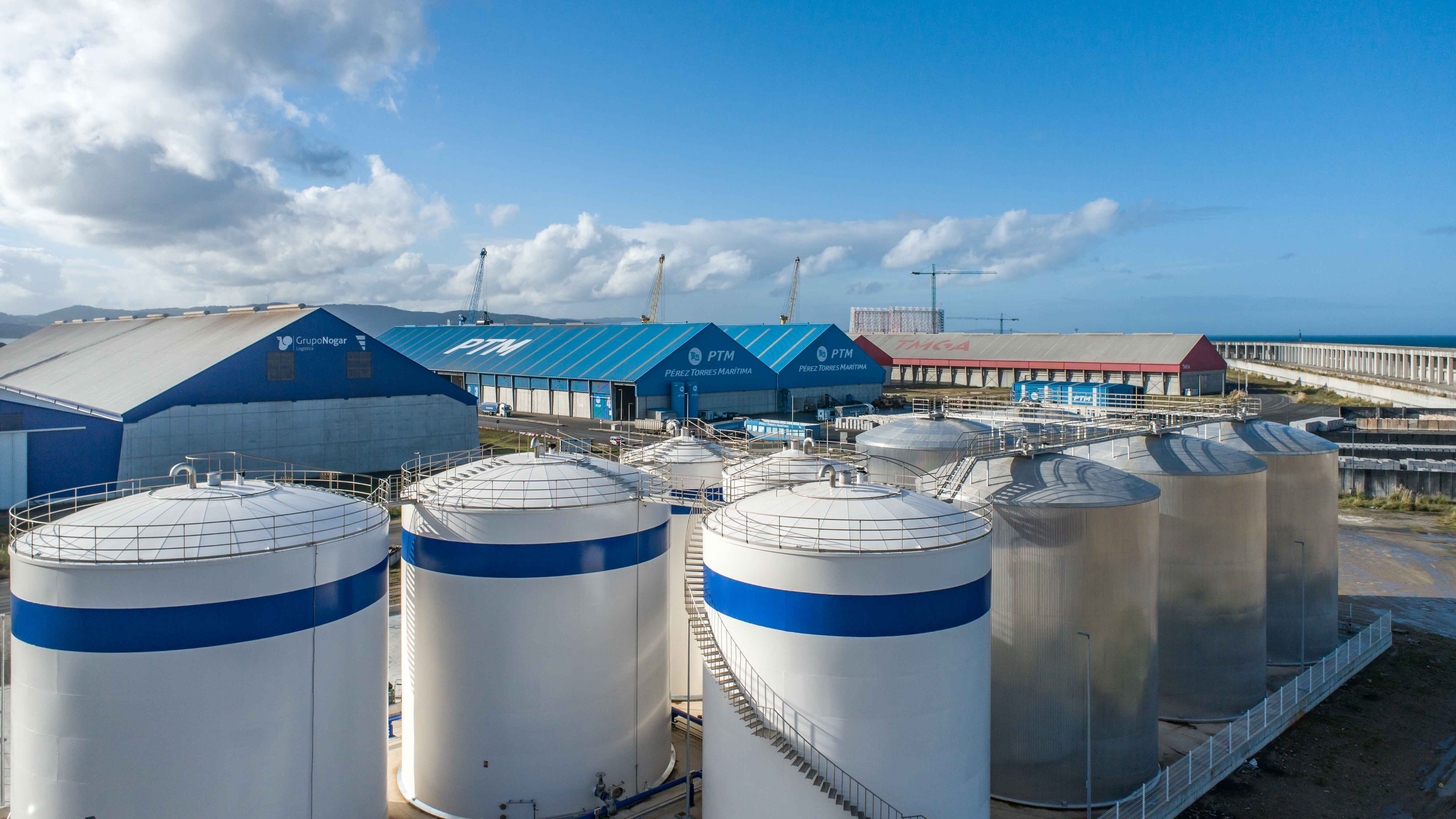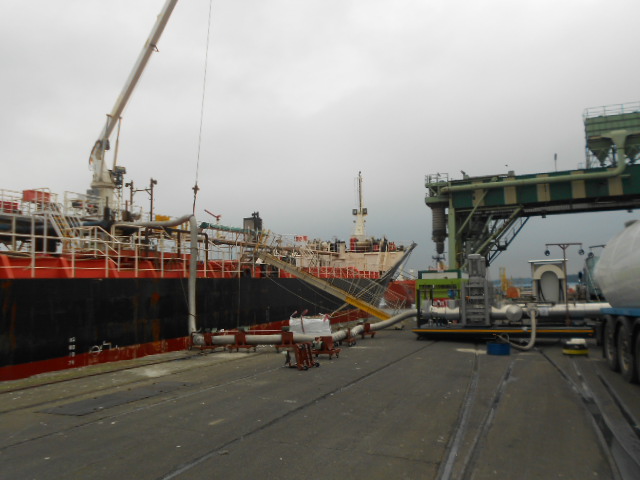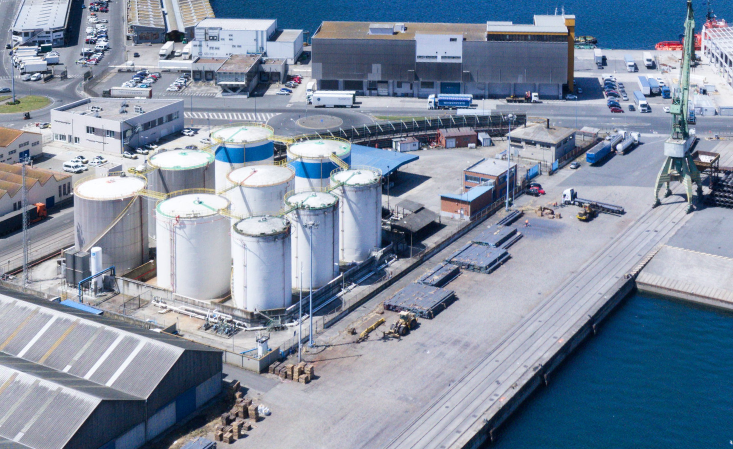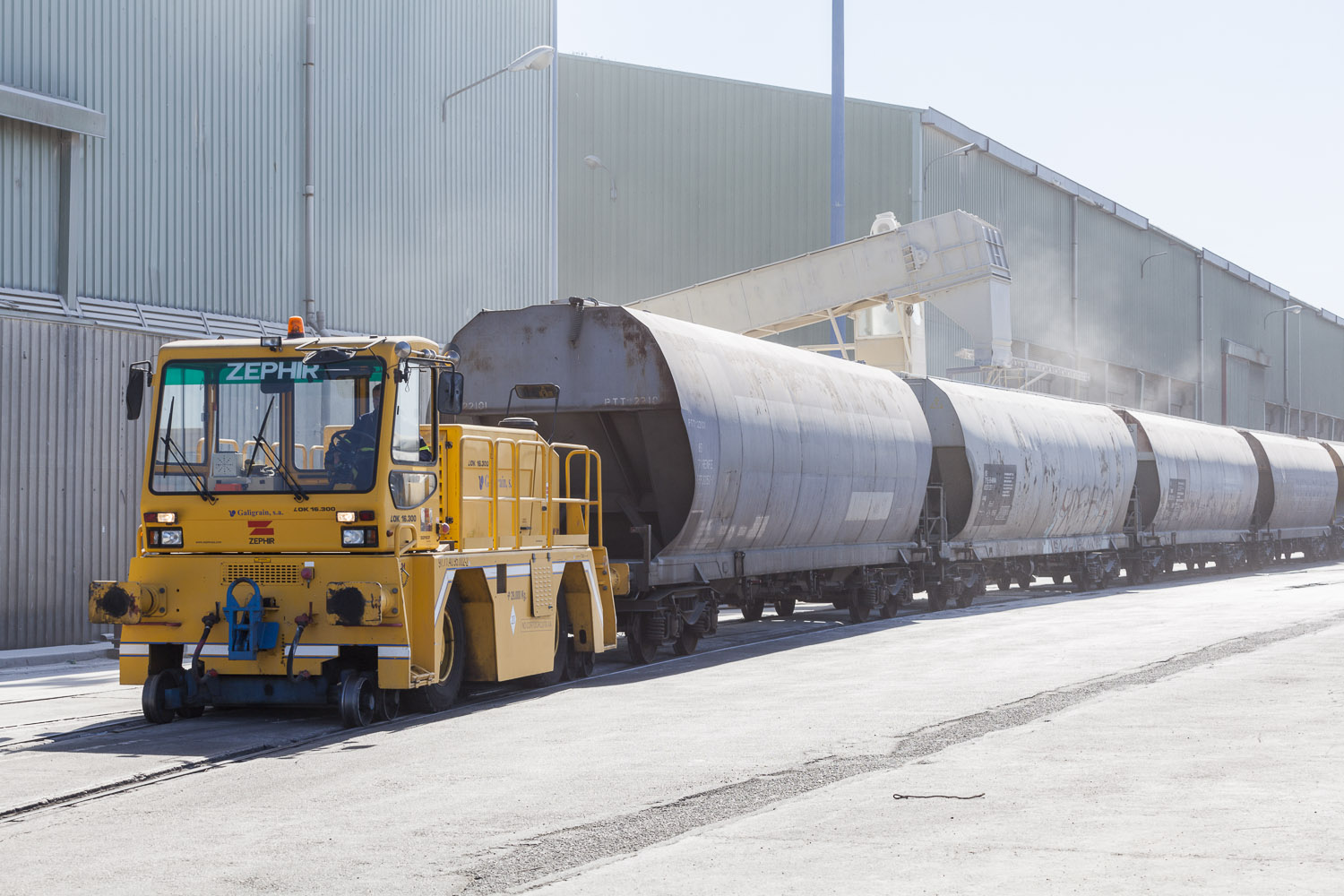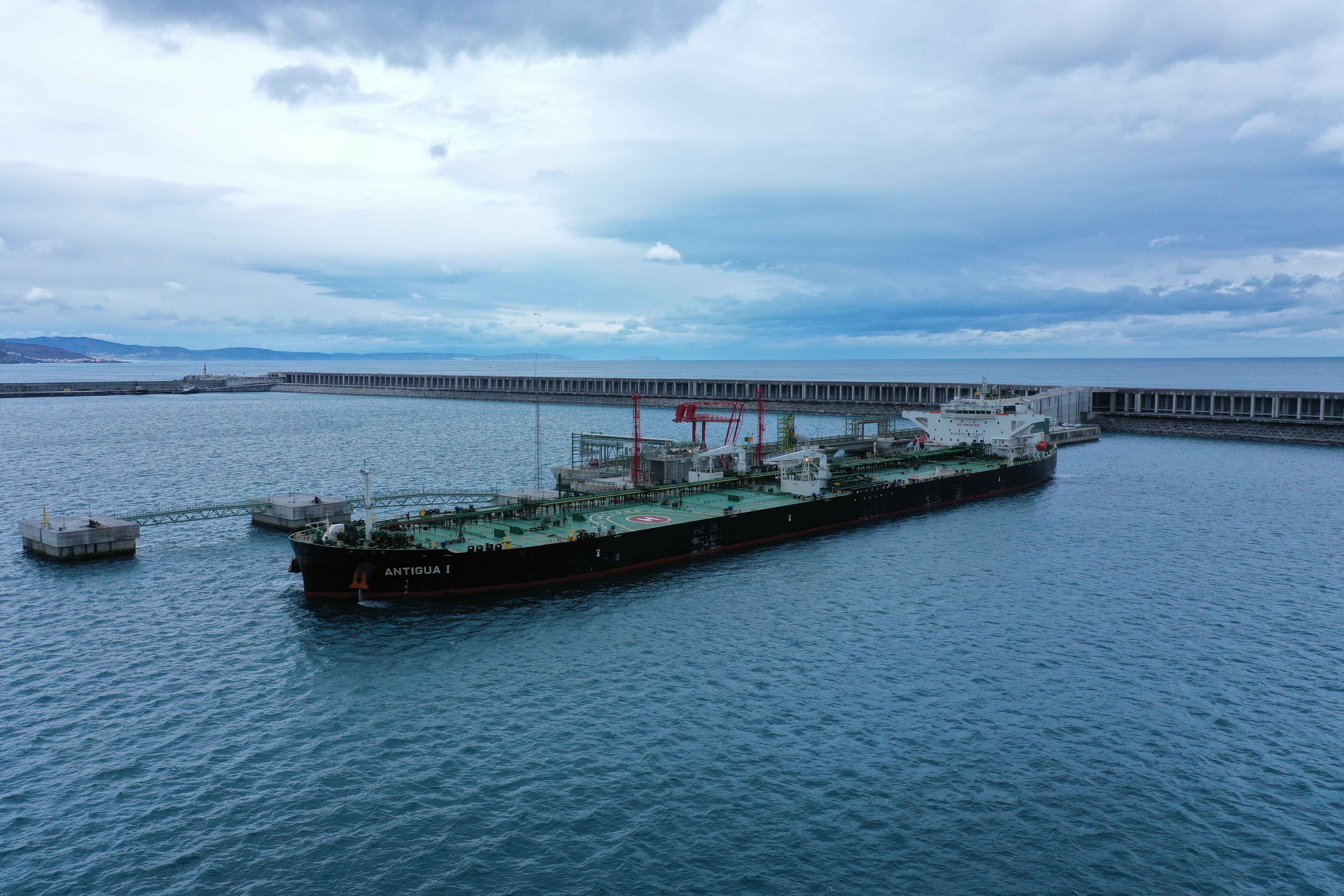
Liquid bulks
Each year, the port of A Coruña moves more than 8 million tonnes crude oil and derivatives destined for the city’s Repsol refinery. They represent around 60% of the total port traffic.
The port infrastructure available in the inner wharf for liquid bulk cargo covers 98,000m2 and has four jetties with depths of between 11 and 16 metres for berthing oil tankers carrying petroleum derivatives, such as gasolines, naphtha, kerosene, etc., which will be taken to the facilities in the outer port. The storage tanks at the terminal have a capacity of between 5,000m3 and 35,000m3.
In addition, the oil tanker facilities in the Outer Port currently cover an area of three hectares, which can be expanded into an additional 20 hectares, and the new jetty that came into operation in 2023 received 50 vessels in its first year, which means that 3 million tonnes of crude oil were pumped to the refinery.
With a depth of over 30 metres, the new jetty has a total length of 520 metres and a berth frontage that permits the unloading of crude oil from vessels of up to 200,000 TPM and a length of 300 metres. It has three facilities for security, an electrical substation and a control room and is equipped with crude oil unloading arms, fire-fighting and docking systems, access walkways and product transport lines.
In addition to permitting the transfer of operations from the inner port, these new logistical facilities at Punta Langosteira will be needed for the future transformation into a carbon-free, multi-energy hub, promoted by Repsol to handle new products, which will also make it possible to offer support to new raw materials traffic. It will therefore help with the creation of the renewable energy hub featured in the "A Coruña Green Port” project, an initiative by the Port Authority backed by Repsol.
In addition to the traffic to the Repsol refinery, there are other liquid bulk cargoes, such as bioethanol and asphalt, that move through the inner port and vegetable oils at the terminal in the outer port.

